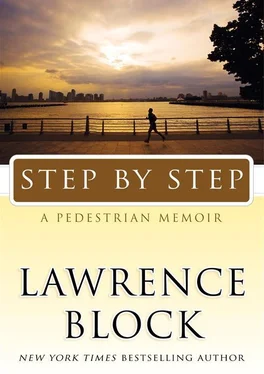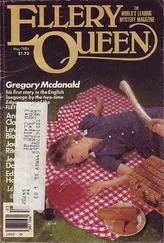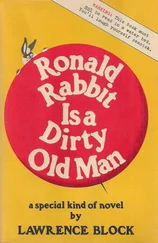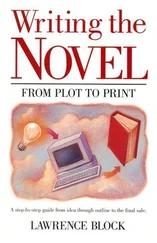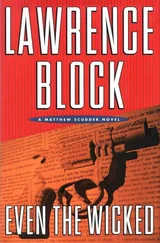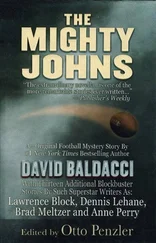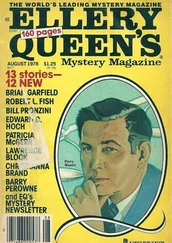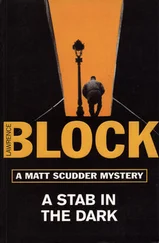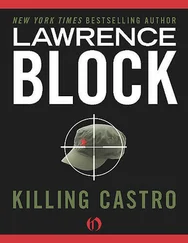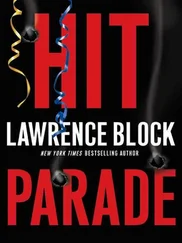Lawrence Block - Step by Step
Здесь есть возможность читать онлайн «Lawrence Block - Step by Step» весь текст электронной книги совершенно бесплатно (целиком полную версию без сокращений). В некоторых случаях можно слушать аудио, скачать через торрент в формате fb2 и присутствует краткое содержание. Год выпуска: 2009, ISBN: 2009, Издательство: William Morrow, Жанр: Биографии и Мемуары, Юмористические книги, на английском языке. Описание произведения, (предисловие) а так же отзывы посетителей доступны на портале библиотеки ЛибКат.
- Название:Step by Step
- Автор:
- Издательство:William Morrow
- Жанр:
- Год:2009
- ISBN:978-0-06-172181-6
- Рейтинг книги:3 / 5. Голосов: 1
-
Избранное:Добавить в избранное
- Отзывы:
-
Ваша оценка:
- 60
- 1
- 2
- 3
- 4
- 5
Step by Step: краткое содержание, описание и аннотация
Предлагаем к чтению аннотацию, описание, краткое содержание или предисловие (зависит от того, что написал сам автор книги «Step by Step»). Если вы не нашли необходимую информацию о книге — напишите в комментариях, мы постараемся отыскать её.
bestselling author comes a touching, insightful, and humorous memoir of an unlikely racewalker and world traveler.
Step by Step — читать онлайн бесплатно полную книгу (весь текст) целиком
Ниже представлен текст книги, разбитый по страницам. Система сохранения места последней прочитанной страницы, позволяет с удобством читать онлайн бесплатно книгу «Step by Step», без необходимости каждый раз заново искать на чём Вы остановились. Поставьте закладку, и сможете в любой момент перейти на страницу, на которой закончили чтение.
Интервал:
Закладка:
Unless, of course, something went wrong.
My car was parked where I could get to it easily, and I had the keys in my waist pack. (They took up far too much space there, because the Hertz people, for reasons I’ve never been able to determine, put two or three copies of the same key on the little ring, along with the remote-control gizmo, and the ring holding them all together is fused, so you can’t disassemble it. The need for multiple keys would seem questionable, since to lose one is to lose them all. The only answer I’ve found is to cut through the ring, tuck the remote into a pouch or pocket, and leave everything else in the car. Think Alexander, and the Gordian knot.)
Sometime after midnight I went to the car, prompted by a sensation of heat on the bottoms of my feet. After sixteen-plus hours, I had blisters threatening to form. I put some tape where it was likely to help, changed my socks, laced up my shoes, and returned to the fray.
I managed another couple of laps, and stopped in at the medical tent. By this time I had substantial blisters on the forepart of each foot. A volunteer did a good job of bandaging them and got me on my feet again.
There are two ways to cope with a blister, aside from simply ignoring it altogether. You can puncture it and expel the fluid before dressing it, or you can leave it intact and protect it with the bandage. The former method relieves the pressure, and thus reduces the pain, but may bring the risk of infection. I probably would have run that risk, given the choice, but I figured the fellow on duty knew what he was going. He got me on my feet again, and while I remained well aware of the blisters, they didn’t keep me from walking. If they slowed me down, it wasn’t by much.
At least I could stay in the race. While I was getting my blisters seen to, another medical volunteer was having a look at Oz Pearlman’s knee, and I guess it didn’t look good. My fellow New Yorker was twenty-four years old, wearing bib number 24 in a twenty-four-hour race; you’d think all of that boded well, and he’d breezed through forty-three laps for 105.78 miles by the time he had to visit the medical tent, but that was as far as he’d go that night. That was still good enough for twelfth place. The fellow who won the race, Paul Hasse, reached 131 miles and change, and I suspect Oz would have gone farther than that if his knee had held up.
Well, something always goes wrong in a twenty-four-hour race. It was about this time that something went wrong for Marshall King, who’d hoped to repeat as a Centurion. He was on pace to do so for the first sixteen hours or so, but his energy levels dropped precipitously sometime after midnight, and he recognized that he just didn’t have it on this particular occasion. His twenty-ninth lap was his last one, and he left the course with 71.88 miles.
Something had gone wrong for me, and it had taken the form of blisters, and I was able to walk through them. I was doing well, though not quite as well as I thought — I got my count wrong, thought Lap Twenty-two was actually Twenty-three, and when I realized their count was correct I felt as though I’d just walked an entire 2.4 miles without getting anywhere. Still, I was on pace to make eighty miles, and I’d been able to walk well past midnight without leaving the course or taking a nap. The longest time I’d spent sitting down was the five or ten minutes it took me to get my blisters attended to. I was tired, no question, but I wasn’t by any means exhausted, and all I had to do was stay on my feet and keep moving for another five hours, and that was something I was confident I could do.
Shows what I know.
The twenty-fifth lap brought me just past the hundred-kilometer mark. I’d qualified for a second Ulli Kamm award, and there was more coming. One more lap and I’d improve on my race in Houston. One more after that and I’d break my own record set a year ago at Wakefield. A third and I’d have walked my age, and a fourth would put me past seventy miles, and, well, the numbers were there.
I ate something, drank something, paused a moment to receive Bruce’s congratulations on the 100K milestone, and kept right on going. And, just past the small wooden bridge, I first noticed that I was leaning forward and bending to the left, and that I was doing this because of pain in my lower back. When I tried to straighten up the pain got worse, and I’d adopted this awkward posture in order to keep walking.
But it’s not as though I could walk pain free that way. It was increasingly painful, it hurt with every step I took, and I didn’t know what to do about it. I stopped walking and tried to stretch it out, and that didn’t seem to do any good; it would feel better for a moment, and once I resumed walking it would be as it had been before, if not worse.
I couldn’t figure out where it had come from. I know I have a tendency to lean forward during the later portions of a race; I’m not aware of it while it’s going on, but I’ve been told about it, and have seen photographic evidence. It’s especially likely to occur when I’m pushing hard, racing the clock, trying to finish strong. In my best marathon, New Orleans 2006, the racewalker I’d surged past in the final mile made a point of criticizing my posture when we met up afterward. “You were really leaning forward,” he said. I responded with the benign smile of the man who’d just whupped his ass.
But I’d never had anything like this before. My lower back, a source of pain for so many people, had never given me trouble, certainly not when I was walking. And what leaning I’d done in the past, in races or training walks, had been entirely unconscious; if I’d became aware I was doing it, I stopped — and then very likely resumed doing it again, unconsciously.
And it had been a simple forward lean. This was more pronounced, and it had me bending to the left as well.
I couldn’t figure out what the hell to do about it. I kept walking, and tried everything I could think of to make it better. I put both hands in the small of my back and pressed against the pain, and that helped a little, but it was hard to walk at more than a snail’s pace in that position. A little more than halfway through the lap there was a park bench, a long one, that I’d passed twenty-five times already without ever giving a thought to it; this time I stretched out on it on my back with my knees slightly bent, and in that position I finally got some relief. I stayed there for a few minutes, and when I got up and resumed walking I was a good deal better.
But it didn’t last. I walked for a few minutes and the pain returned.
I finished the lap, stopped at the medical tent, and found there was a wait of fifteen minutes or so before I could get a massage. I couldn’t see the point in sitting around, and this didn’t really feel like something massage would help. I walked on to the walkers’ tent and sank into a chair. I could sit without pain, and I did, for a few minutes. Then I made room for myself among Dave’s shoes and eased myself down on the ground, lying there and letting my spine straighten out, as it had on the bench.
One more lap and I’d set a new record of 67.04 miles.
I got up and forced myself through another circuit of the course. I stopped two or three times to lie down and stretch, and I didn’t wait to do so until I reached that bench. I just tried to pick a few square feet of pavement where I’d be unlikely to get stepped on by another participant. Once or twice someone noticed me and asked if I was all right, and I didn’t really know how to answer that one. I wasn’t, but to say so would be asking for help, and how was anybody going to help me?
At the end of the lap I stopped again at the walkers’ tent and lay down again on the ground. Bruce found me a cup of coffee, and I drank that gratefully, and set out on the lap that would bring me past sixty-nine miles. That was my age and more, as I wouldn’t be sixty-nine years old for another three weeks.
Читать дальшеИнтервал:
Закладка:
Похожие книги на «Step by Step»
Представляем Вашему вниманию похожие книги на «Step by Step» списком для выбора. Мы отобрали схожую по названию и смыслу литературу в надежде предоставить читателям больше вариантов отыскать новые, интересные, ещё непрочитанные произведения.
Обсуждение, отзывы о книге «Step by Step» и просто собственные мнения читателей. Оставьте ваши комментарии, напишите, что Вы думаете о произведении, его смысле или главных героях. Укажите что конкретно понравилось, а что нет, и почему Вы так считаете.
